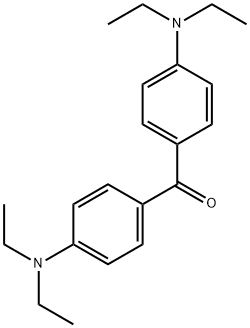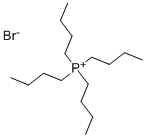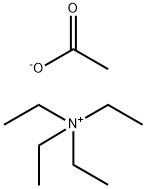4,4'-Bis(diethylamino) benzophenone
Synonym(s):p ,p ′-Tetraethyldiaminobenzophenone;4,4′-(Tetraethyldiamino)benzophenone;4,4′-Bis(diethylamino)-benzophenone;4,4′-Bis(diethylamino)diphenyl ketone;Bis[4-(diethylamino)phenyl]methanone
- CAS NO.:90-93-7
- Empirical Formula: C21H28N2O
- Molecular Weight: 324.46
- MDL number: MFCD00009044
- EINECS: 202-025-4
- SAFETY DATA SHEET (SDS)
- Update Date: 2025-11-17 10:01:41

What is 4,4'-Bis(diethylamino) benzophenone?
Chemical properties
YELLOW TO YELLOW-GREEN CRYSTALLINE GRANULES
Flammability and Explosibility
Not classified
Purification Methods
Crystallise the phenone from EtOH (25mL/g) and dry it under vacuum. Its picrate forms yellow needles from EtOH with m 178.5o. [Beilstein 14 II 59.]
Properties of 4,4'-Bis(diethylamino) benzophenone
| Melting point: | 89-92 °C(lit.) |
| Boiling point: | 475.7±30.0 °C(Predicted) |
| Density | 1.048±0.06 g/cm3(Predicted) |
| vapor pressure | 0Pa at 20℃ |
| Flash point: | 151 °C |
| storage temp. | Store below +30°C. |
| solubility | Chloroform (Slightly), Methanol (Slightly) |
| form | Crystalline Granules |
| pka | 4.14±0.32(Predicted) |
| color | Yellow to yellow-green |
| PH | 4-6 (50g/l, H2O, 20℃) |
| Water Solubility | insoluble |
| Sensitive | Light Sensitive |
| λmax | 352nm(THF)(lit.) |
| BRN | 2148611 |
| CAS DataBase Reference | 90-93-7(CAS DataBase Reference) |
| EPA Substance Registry System | Methanone, bis[4-(diethylamino)phenyl]- (90-93-7) |
Safety information for 4,4'-Bis(diethylamino) benzophenone
| Signal word | Warning |
| Pictogram(s) |
 Exclamation Mark Irritant GHS07  Environment GHS09 |
| GHS Hazard Statements |
H315:Skin corrosion/irritation H319:Serious eye damage/eye irritation H335:Specific target organ toxicity, single exposure;Respiratory tract irritation H400:Hazardous to the aquatic environment, acute hazard H401:Hazardous to the aquatic environment, acute hazard H410:Hazardous to the aquatic environment, long-term hazard H411:Hazardous to the aquatic environment, long-term hazard |
| Precautionary Statement Codes |
P261:Avoid breathing dust/fume/gas/mist/vapours/spray. P264:Wash hands thoroughly after handling. P264:Wash skin thouroughly after handling. P273:Avoid release to the environment. P280:Wear protective gloves/protective clothing/eye protection/face protection. P391:Collect spillage. Hazardous to the aquatic environment P305+P351+P338:IF IN EYES: Rinse cautiously with water for several minutes. Remove contact lenses, if present and easy to do. Continuerinsing. P337+P313:IF eye irritation persists: Get medical advice/attention. P501:Dispose of contents/container to..… |
Computed Descriptors for 4,4'-Bis(diethylamino) benzophenone
| InChIKey | VYHBFRJRBHMIQZ-UHFFFAOYSA-N |
New Products
4,4-Difluoropiperidine hydrochloride tert-butyl 9-methoxy-3-azaspiro[5.5]undecane-3-carboxylate Indole Methyl Resin N-Isopropylurea N,N-Dicyclohexylcarbodiimide(DCC) MELDRUMS ACID 5-METHYLISOXAZOLE-4-CARBOXYLIC ACID Magnessium Bis glycinate Zinc ascorbate 1-bromo-2-butyne 2-acetamidophenol 9(10H)-anthracenone Erythrosin B, 4-Piperidinopiperidine 2-((4-morpholinophenylamino) (methylthio) methylene) malononitrile 2,4-dihydroxybenzaldehyde 3-(4-morpholinophenylamino)-5-amino-1H-pyrazole-4-carbonitrile Methyl 2-methylquinoline-6-carboxylate 2,6-dichloro-4-nitropyridine 4-Bromo-2-chlorobenzonitrile 2-(benzylamino)acetic acid hydrochloride 4-(tert-Butoxycarbonylamino)but- 2-ynoic acid 3,4-dihydro-2H-benzo[b][1,4]dioxepine 1-Phenyl-1-cycloprppanecarboxylicacidRelated products of tetrahydrofuran








You may like
-
 4,4-Bis(diethylamino) benzophenone, 98% 98%View Details
4,4-Bis(diethylamino) benzophenone, 98% 98%View Details -
 4,4'-Bis(diethylamino)benzophenone CAS 90-93-7View Details
4,4'-Bis(diethylamino)benzophenone CAS 90-93-7View Details
90-93-7 -
 4,4′-Bis(diethylamino)benzophenone, ≥99% CAS 90-93-7View Details
4,4′-Bis(diethylamino)benzophenone, ≥99% CAS 90-93-7View Details
90-93-7 -
 4,4′-Bis(diethylamino)benzophenone CAS 90-93-7View Details
4,4′-Bis(diethylamino)benzophenone CAS 90-93-7View Details
90-93-7 -
 4,4′-Bis(diethylamino)-benzophenone CAS 90-93-7View Details
4,4′-Bis(diethylamino)-benzophenone CAS 90-93-7View Details
90-93-7 -
 20677-73-0 (2,2-diethoxyethyl)methylamine 98%View Details
20677-73-0 (2,2-diethoxyethyl)methylamine 98%View Details
20677-73-0 -
 3-(4-(hydroxyamino)-1-oxoisoindolin-2-yl)piperidine-2,6-dione 98%View Details
3-(4-(hydroxyamino)-1-oxoisoindolin-2-yl)piperidine-2,6-dione 98%View Details -
 57381-49-4 2-bromo-4-chlorobenzonitrile 98%View Details
57381-49-4 2-bromo-4-chlorobenzonitrile 98%View Details
57381-49-4
Statement: All products displayed on this website are only used for non medical purposes such as industrial applications or scientific research, and cannot be used for clinical diagnosis or treatment of humans or animals. They are not medicinal or edible.
